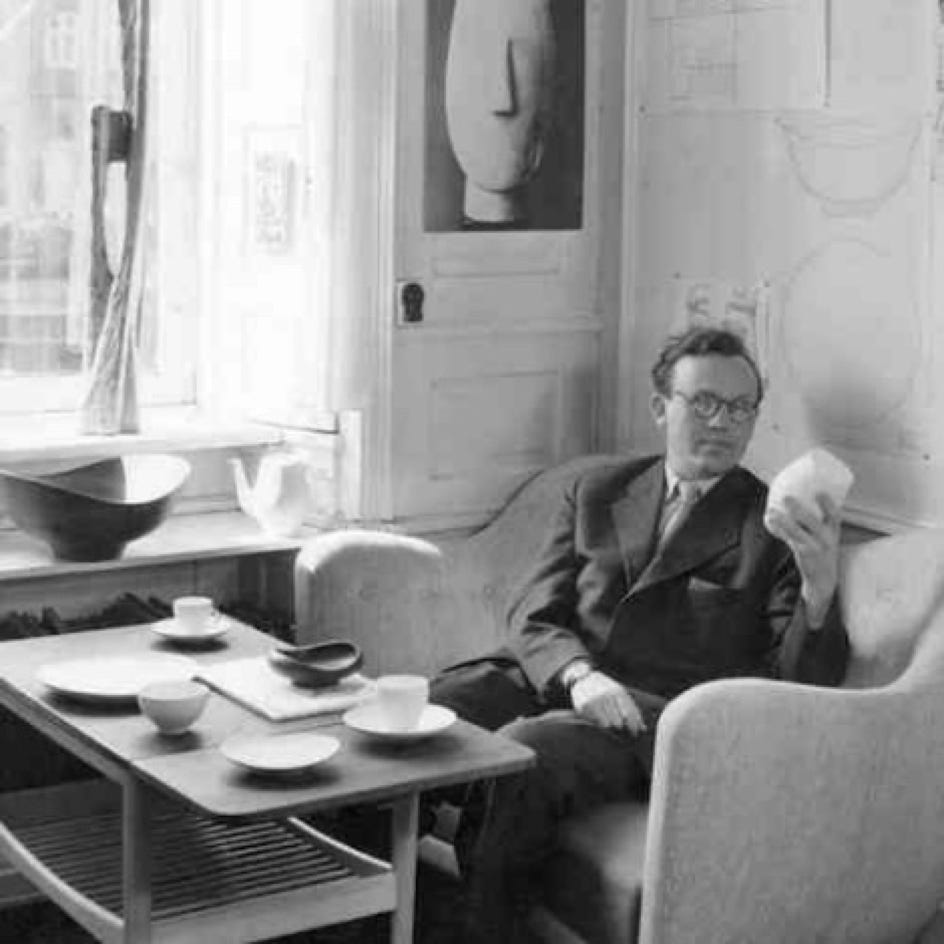15% off with DESIGN15
Finn Juhl designed this table for his and Niels Vodder's stand at the Cabinetmakers' Guild exhibition at the Danish Museum of Art and Design in 1948, which they called "An Art Collector's Study".
Because of the unique exhibition and function of the table, it is now known as the "Art Collector's Table". The table is made from American black walnut, with a solid frame and edges.
The top of the table is veneered, allowing the grain of the tree to be seen uninterrupted. The display case is placed in a separate compartment, also in walnut and removable.
Although the small table was included in Finn Juhl's watercolours presenting the stand, and there are detailed sketches revolving around the shape of the table, it does not appear in any of the photographs from the 1948 exhibition. Presumably it was too complex and time-consuming for master carpenter Niels Vodder to make at the time.
Even today, production is an advanced process, with very tight tolerances, where precision in every detail is vital to the design as a whole.
In its closed form, The Art Collector's Table has a simple graphic expression. Look closer and you'll discover a wealth of detail: the tabletop unfolds to reveal a display case protecting a treasure chamber for the collector's most precious objects.
When the table is unfolded, the leaves function as two trays on which to rest a cup of coffee, while admiring the objects displayed in the glass cover.


Materials Solid walnut - Veneered table top with separate glass case.
Dimensions 62 / 124 x 46 x H60 cm
Table Art Collector’s

As a teenager, Finn Juhl (1912-1989) wanted to become an art historian after having been fascinated by fine arts since childhood. His father prevented him from doing so and he studied architecture. Later, once his reputation as a furniture designer had been acquired, he would speak of himself as a self-taught man, certainly in reference to this thwarted vocation which forced him to make his intellectual journey alone. His very singular style owes much to this non-linear trajectory, with a very unacademic interpretation of art visible in his work. Finn Juhl began his studies in 1930, a key period that saw the birth of modern design and furniture.
His ultra-modern offices in the center of Copenhagen greeted visitors with a huge Japanese paper fish, a symbol of imagination. And rather than approaching furniture design from a functional, classical perspective, Finn Juhl approached his work as a sculptor. He sought beauty in volume and form, life and expressiveness. An approach that in the 1940's and 1950's was totally unprecedented. For Finn Juhl, it was clear that a piece of furniture could not be limited to a function, but also had to express an artistic sensibility.
While he remains world-famous for his furniture, Finn Juhl also designed several interior architecture projects and a few industrial products, including IBM typewriters. His greatest commercial success was with the Baker Company in the United States, which allowed him to mass-produce several pieces of furniture.
As an architect, he is known for the interior design of the United Nations Council in New York.